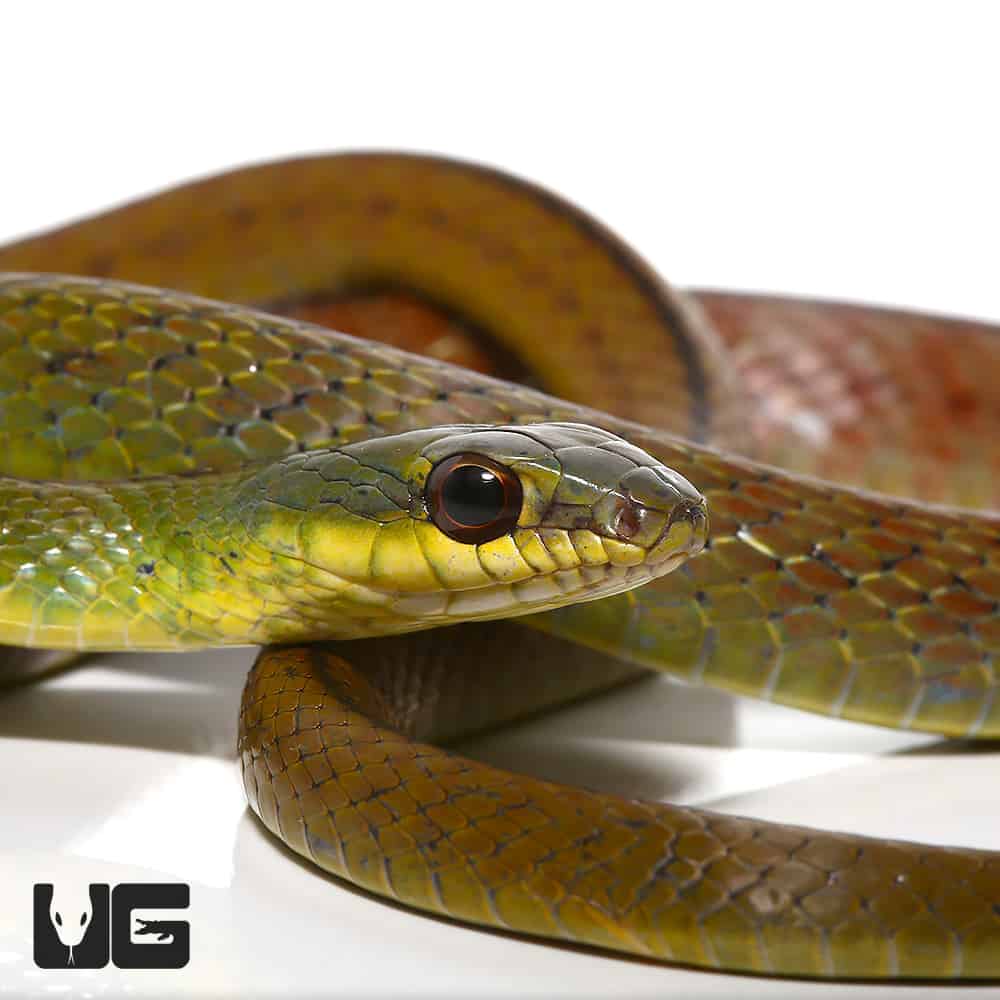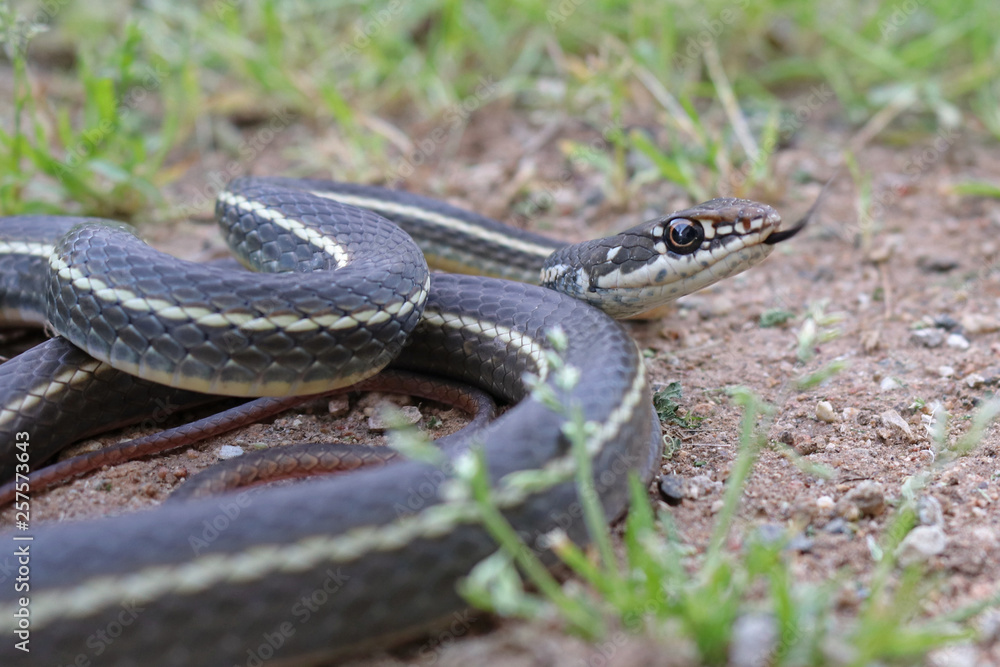Picture this: a sleek, lightning-fast snake gliding effortlessly through the underbrush, its vibrant stripes catching the sunlight in flashes of brilliance. Welcome to the world of the striped racer snake, a fascinating reptile that's not just a sight to behold but also a crucial player in its ecosystem. If you've ever wondered about these incredible creatures, you've come to the right place. Today, we're diving deep into the life, habits, and mysteries of the striped racer snake.
The striped racer snake, scientifically known as Coluber constrictor priapus, is more than just a snake—it's a symbol of agility, adaptability, and resilience. Found primarily in the southern United States, this snake has captured the curiosity of both scientists and nature enthusiasts alike. Its striking appearance and impressive speed make it one of the most intriguing species in the reptile kingdom.
As we journey through the world of the striped racer snake, you'll uncover everything from its physical characteristics to its role in the ecosystem. Whether you're a wildlife enthusiast, a student, or simply someone who appreciates the wonders of nature, this article will give you a comprehensive understanding of this remarkable creature. So buckle up and get ready to learn something truly amazing!
Read also:Nautical Bowls El Paso Your Ultimate Guide To The Best Seafood Delights
Table of Contents
- Biography of the Striped Racer Snake
- Physical Traits and Characteristics
- Natural Habitat and Distribution
- Diet and Feeding Habits
- Behavior and Social Structure
- Reproduction and Lifespan
- Ecological Role and Importance
- Threats and Conservation Efforts
- Common Myths and Misconceptions
- Conclusion and Final Thoughts
Biography of the Striped Racer Snake
Data and Facts
Let's start with the basics. The striped racer snake is a non-venomous species that belongs to the Colubridae family. Known for its slender body and striking coloration, this snake is a true marvel of evolution. Below is a quick glance at some key facts about this incredible creature:
| Scientific Name | Coluber constrictor priapus |
|---|---|
| Common Name | Striped Racer Snake |
| Average Length | 3 to 5 feet |
| Coloration | Black or dark brown with distinct yellow or cream stripes |
| Habitat | Open woodlands, grasslands, and coastal regions |
These snakes are not just fast—they're also highly intelligent and adaptable, making them one of the most successful snake species in their range.
Physical Traits and Characteristics
When it comes to appearance, the striped racer snake is a true standout. Its body is sleek and muscular, allowing it to move with incredible speed. The snake's most defining feature is its striking coloration—dark brown or black scales with vibrant yellow or cream stripes running down its sides. This coloration serves as both camouflage and a warning to potential predators.
Interestingly, the stripes of the striped racer snake can vary in intensity depending on its age and location. Juveniles often have more pronounced stripes, which fade slightly as they mature. This adaptation helps them blend into their surroundings and avoid detection by predators.
Natural Habitat and Distribution
Where Can You Find the Striped Racer Snake?
The striped racer snake is native to the southern United States, particularly in states like Florida, Georgia, and South Carolina. These snakes thrive in a variety of habitats, including open woodlands, grasslands, and coastal regions. They prefer areas with plenty of sunlight and access to water, as they often hunt near streams and ponds.
- Open woodlands provide ample cover and hunting grounds.
- Grasslands offer a perfect environment for their speed and agility.
- Coastal regions, with their unique ecosystems, support a diverse range of prey species.
Despite their adaptability, striped racer snakes face challenges due to habitat loss and human encroachment. Conservation efforts are crucial to ensure their survival in the wild.
Read also:Nail Salon Burleson Your Ultimate Guide To Stunning Manicures And Pedicures
Diet and Feeding Habits
Like most snakes, the striped racer is a carnivorous predator. Its diet primarily consists of small mammals, birds, lizards, and insects. Thanks to its incredible speed, the striped racer can chase down prey with ease. Unlike venomous snakes, it relies on its strength and agility to subdue its meals.
Here's a quick breakdown of its feeding habits:
- Active hunters, they rely on sight and speed to catch prey.
- They use constriction to immobilize larger prey, though smaller animals are often swallowed alive.
- Striped racers are opportunistic feeders, meaning they'll eat whatever is available in their environment.
Understanding their diet is crucial for conservationists, as it highlights the importance of maintaining healthy ecosystems for both predator and prey.
Behavior and Social Structure
What Makes the Striped Racer Unique?
The striped racer snake is a solitary creature, spending most of its time hunting and basking in the sun. However, during the breeding season, these snakes can be seen in small groups, often congregating near water sources. Despite their solitary nature, striped racers exhibit fascinating behaviors that set them apart from other snake species.
For instance, they're known for their incredible speed, which can reach up to 5 miles per hour. This speed allows them to escape predators and catch prey with ease. Additionally, striped racers are excellent climbers, often scaling trees and bushes in search of food or shelter.
Reproduction and Lifespan
Reproduction in striped racer snakes typically occurs during the spring and early summer months. Females lay clutches of 6 to 14 eggs, which hatch after about two months. Juvenile snakes are independent from birth and must fend for themselves in the wild.
The lifespan of a striped racer snake in the wild is estimated to be around 10 to 15 years, though some individuals in captivity have lived longer. Factors such as habitat quality, predation, and disease can significantly impact their longevity.
Ecological Role and Importance
Striped racer snakes play a vital role in their ecosystems by controlling populations of small mammals and insects. As predators, they help maintain a balance in the food chain, preventing certain species from overpopulating and disrupting the environment.
Beyond their ecological importance, striped racers also serve as indicators of environmental health. Their presence—or absence—in a particular area can provide valuable insights into the state of the local ecosystem. For example, declining populations may signal habitat degradation or pollution issues that need addressing.
Threats and Conservation Efforts
Protecting the Striped Racer Snake
Despite their adaptability, striped racer snakes face numerous threats in the wild. Habitat loss due to urbanization and agriculture is one of the biggest challenges they encounter. Additionally, road mortality and human persecution pose significant risks to their survival.
Conservation efforts are underway to protect these incredible creatures. Organizations like the Florida Fish and Wildlife Conservation Commission are working to preserve critical habitats and educate the public about the importance of snakes in the ecosystem. Initiatives such as wildlife corridors and protected areas are helping to ensure that striped racers have safe places to live and thrive.
Common Myths and Misconceptions
There are several myths surrounding the striped racer snake that need to be addressed. For instance, many people believe that these snakes are venomous, which is simply not true. Striped racers are non-venomous and pose no threat to humans. Another common misconception is that they're aggressive, when in reality, they're shy and prefer to avoid confrontation.
Education is key to dispelling these myths and promoting coexistence between humans and wildlife. By understanding the true nature of the striped racer snake, we can appreciate its role in the ecosystem and work towards its conservation.
Conclusion and Final Thoughts
In conclusion, the striped racer snake is a remarkable creature that deserves our admiration and protection. From its striking appearance to its crucial role in the ecosystem, this snake is a true marvel of nature. By learning more about the striped racer and its habits, we can better appreciate the biodiversity of our planet and take steps to ensure its preservation for future generations.
So, the next time you encounter a striped racer snake in the wild, take a moment to appreciate its beauty and significance. And don't forget to share this article with your friends and family to spread awareness about these incredible creatures. Together, we can make a difference in the world of wildlife conservation!


